This article discusses the common condition of prominent ears and what is involved in the surgical correction (pinnaplasty).
Treatment for Correcting Prominent Ears - Contents
- Introduction
- What is the technique for correcting prominent ears?
- Possible complications
- Before and after surgery
- FAQs on the technique for correcting prominent ears
Introduction
Prominence of the ears is a very common condition that often causes sufferers significant distress. Teasing at school frequently begins at around six or seven years of age and although some children cope perfectly well and are unconcerned many become quite upset as a result. In adulthood, some people learn to adapt but others continue to be very aware and self-conscious of the prominence of their ears.
Ears are prominent either because one of the folds of the ear (called the superior crus) is missing, or because the bowl of the ear (known as the concha) is excessively deep. Often a combination of these two exists with both contributing to the problem.
Surgical correction of prominent ears is a highly effective procedure in adults and children. This is delicate but routine surgery to those experienced in the techniques. The ideal surgeon would be a plastic surgeon experienced in ear reconstruction as he or she will operate on ears on a very frequent basis.
What is the technique for correcting prominent ears?
Old fashioned techniques such as cartilage scoring are now becoming obsolete because of the unacceptable risk of complications. The simplest, consistently most effective technique involves the precise placement of sutures in the cartilage of the ear, accessed by an incision hidden at the back of the ear. The process is as follows:
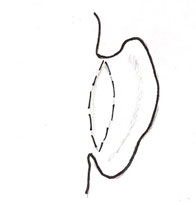 |
First excess skin is removed in the pattern as shown |
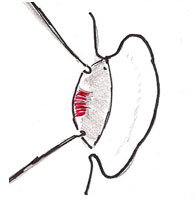 |
Then the skin is carefully lifted to allow access to the cartilage |
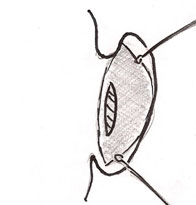 |
In the occasional case, where the conchal bowl is extremely deep a narrow crescent of cartilage is removed before the sutures are placed. In most cases this step is not necessary |
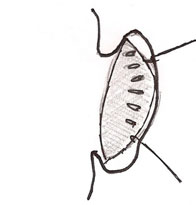 |
Once the skin has been freed, stitches are placed in the cartilage to recreate the missing fold |
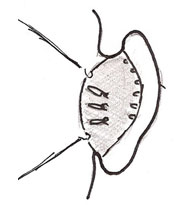 |
Stitches are then used to set the ear back and correct the excessive depth of the conchal bowl |
Once the ear is in a good position, the skin is repaired with absorbable sutures so that the patient does not have to have them removed. A soft dressing is applied and around four hours after surgery patients can go home accompanied. As early as the following day the dressings can be removed so that the wounds are reviewed. Once removed the dressings are not reapplied.
Washing the hair with shampoo is allowed from the first day following surgery, or as soon as the dressings are removed. While care must be taken the only restrictions are that contact sports should be avoided and helmets cannot be worn for a month.
Possible complications
If a suture technique is used and your surgeon is experienced, potential complications are minor. Severe complications, just as with any procedure performed under anaesthetic are extremely rare.
Minor complications such as bleeding following surgery sometimes require a small operation to correct the problem. Wound infection is rare following prominent ear surgery. Wound opening is usually mild and heals quickly. Recurrence of ear prominence may occur but is easily correctible particularly in view of the fact that a suture technique causes minimal scarring.
The benefits of treatment are that the ears can have a normal appearance, with a scar hidden in the fold behind the ear. The gives the child or adult who has undergone the surgery a long awaited change in appearance and has a significant and positive effect on confidence and self-esteem.
Before and after surgery
Here are images of a boy before and after pinnaplasty surgery performed by the author, Greg O'Toole.
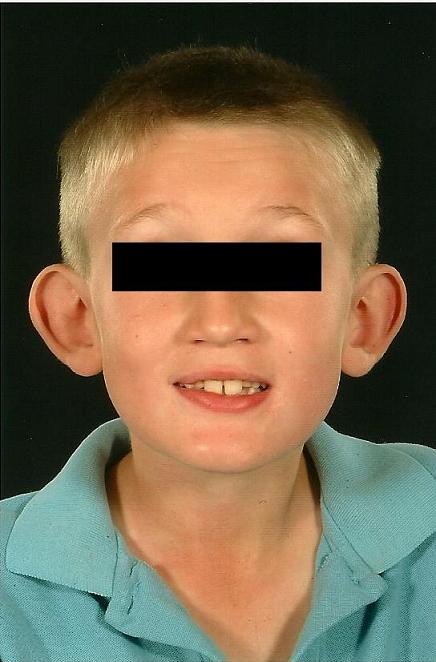
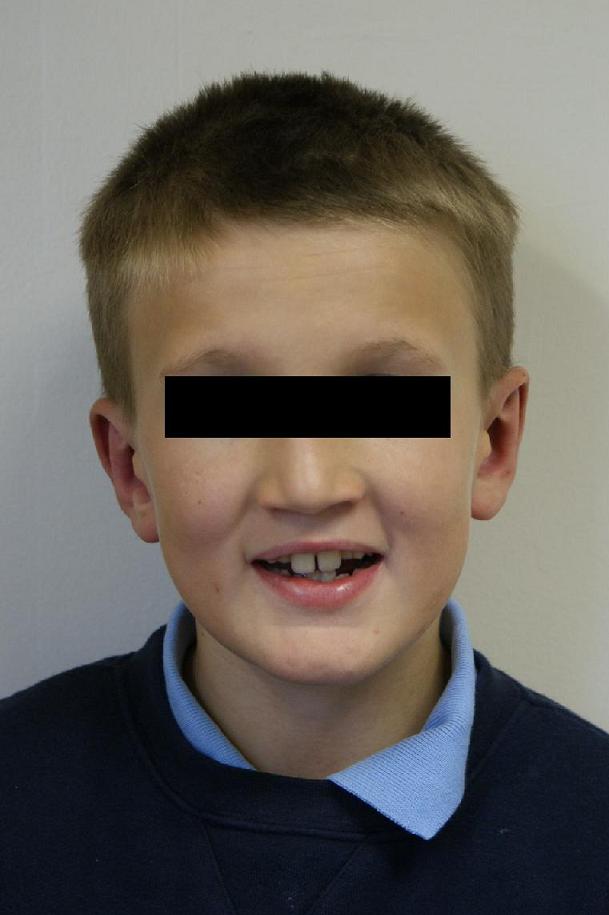
FAQs on the technique for correcting prominent ears
-
At what age can the surgery first be performed?
The surgery is usually performed no earlier than six years of age. By this age the cartilage is firmer than in younger children and the ears are much closer to adult size. Children aged six and older are more able to cope psychologically with the surgery. Most importantly, it should be the child’s decision alone to undergo prominent ear correction and before the age of 6 this is highly unlikely.
-
Is there an upper age limit to the surgery?
No, this surgery can be performed on adults of all ages.
-
Can the surgery be performed under local anaesthetic?
Yes, while most cases are performed under general anaesthetic, local anaesthetic is an option.
-
How long do the dressings stay in place?
Dressings can be removed from as early as the day after surgery and do not need to be reapplied.
-
How soon can I wash my hair?
As soon as the dressings are removed.
-
How soon can I resume sport?
Non-contact sports can be resumed two weeks following surgery after a review by the surgeon. Contact sports and any activity requiring the use of a helmet can be resumed one month following surgery.
-
What other surgical techniques are available?
Old-fashioned techniques such as “cartilage scoring” are not advisable as the risks of ear deformity are unacceptable. Minimalist “incisionless” techniques are of no use in cases where the conchal bowl is responsible for ear prominence. In cases in which the prominence is due to lack of one of the ears folds “incisionless” techniques are occasionally effective but are prone to recurrence.
The best technique for reliable long-term results in one simple procedure is a routine open, suture technique performed by an experienced surgeon.
-
Are ear splints an option?
Commercially available ear splints are effective in new-born babies with prominent ears. These work only while the ear cartilage is very soft. Beyond six months of age they are of no use.

